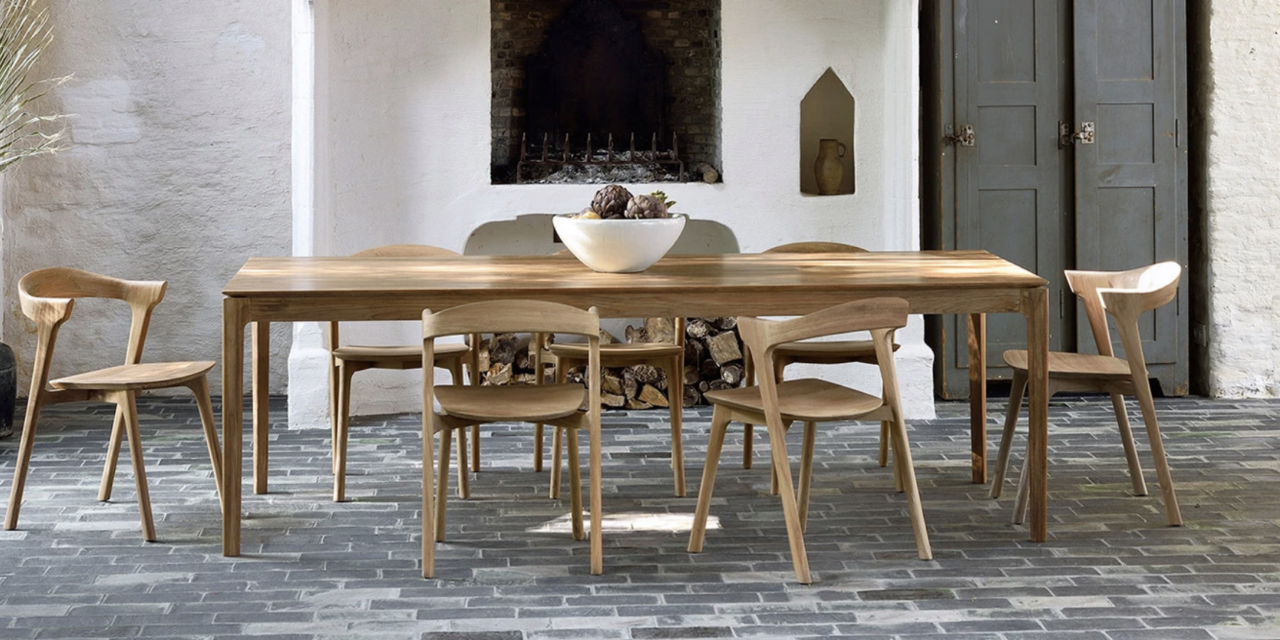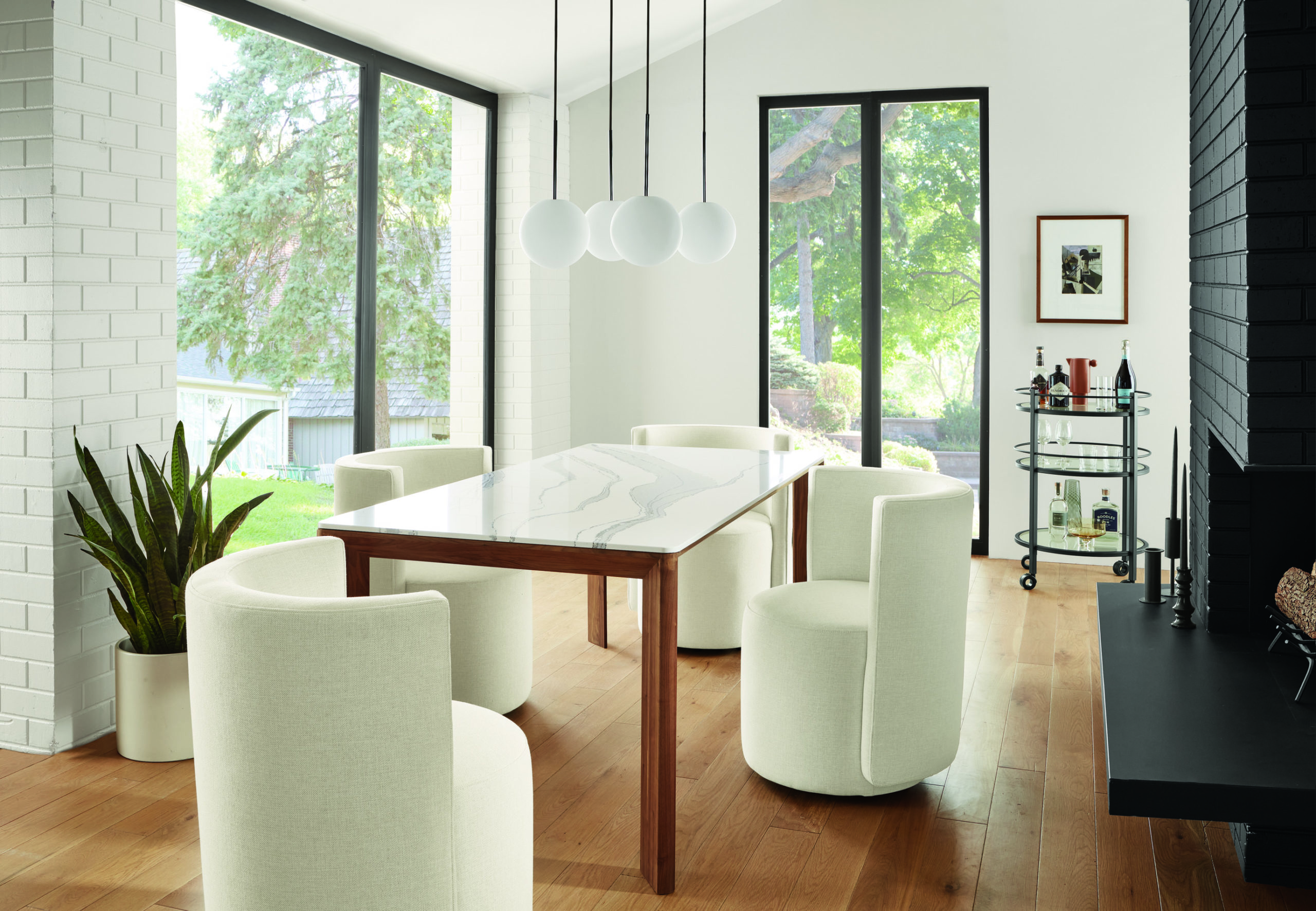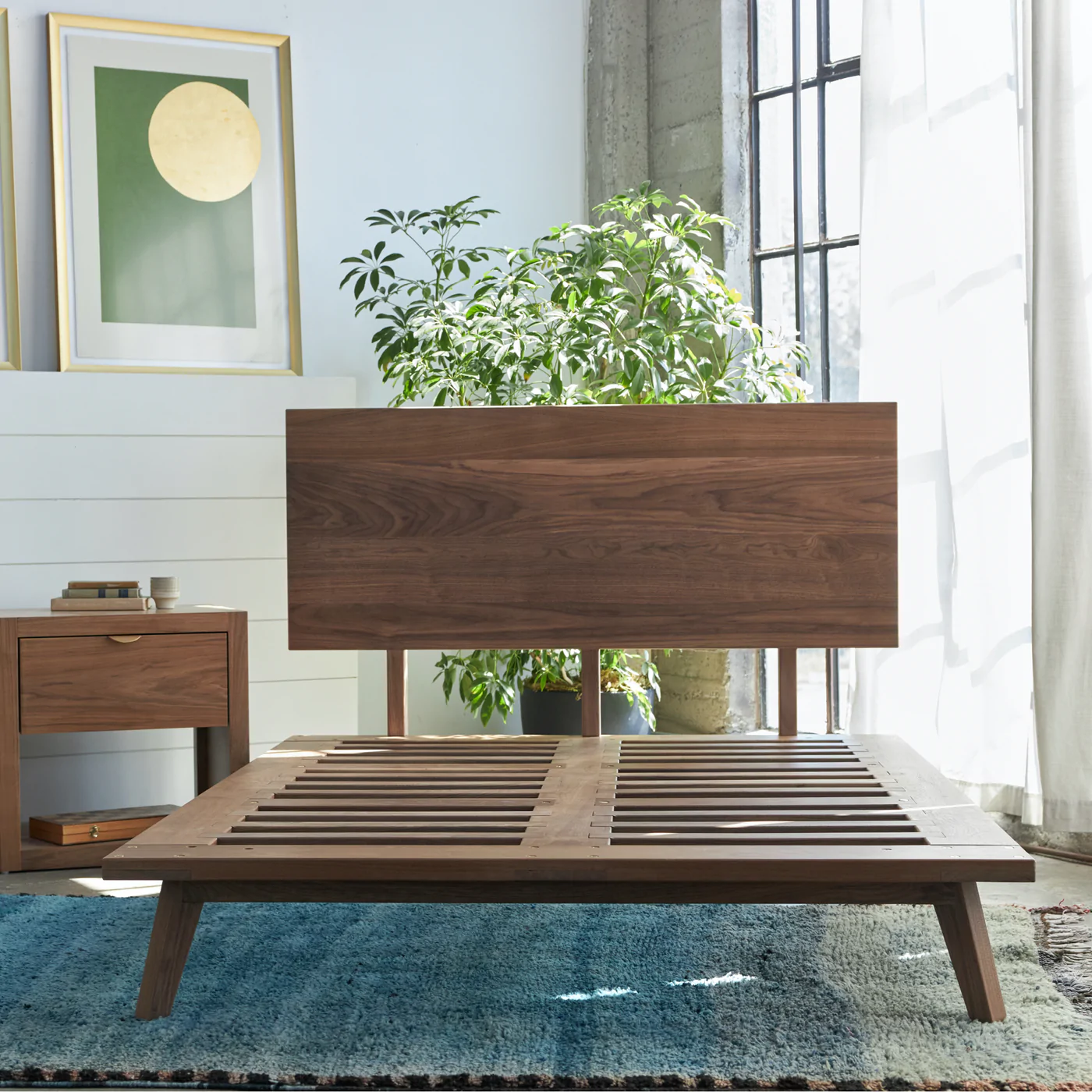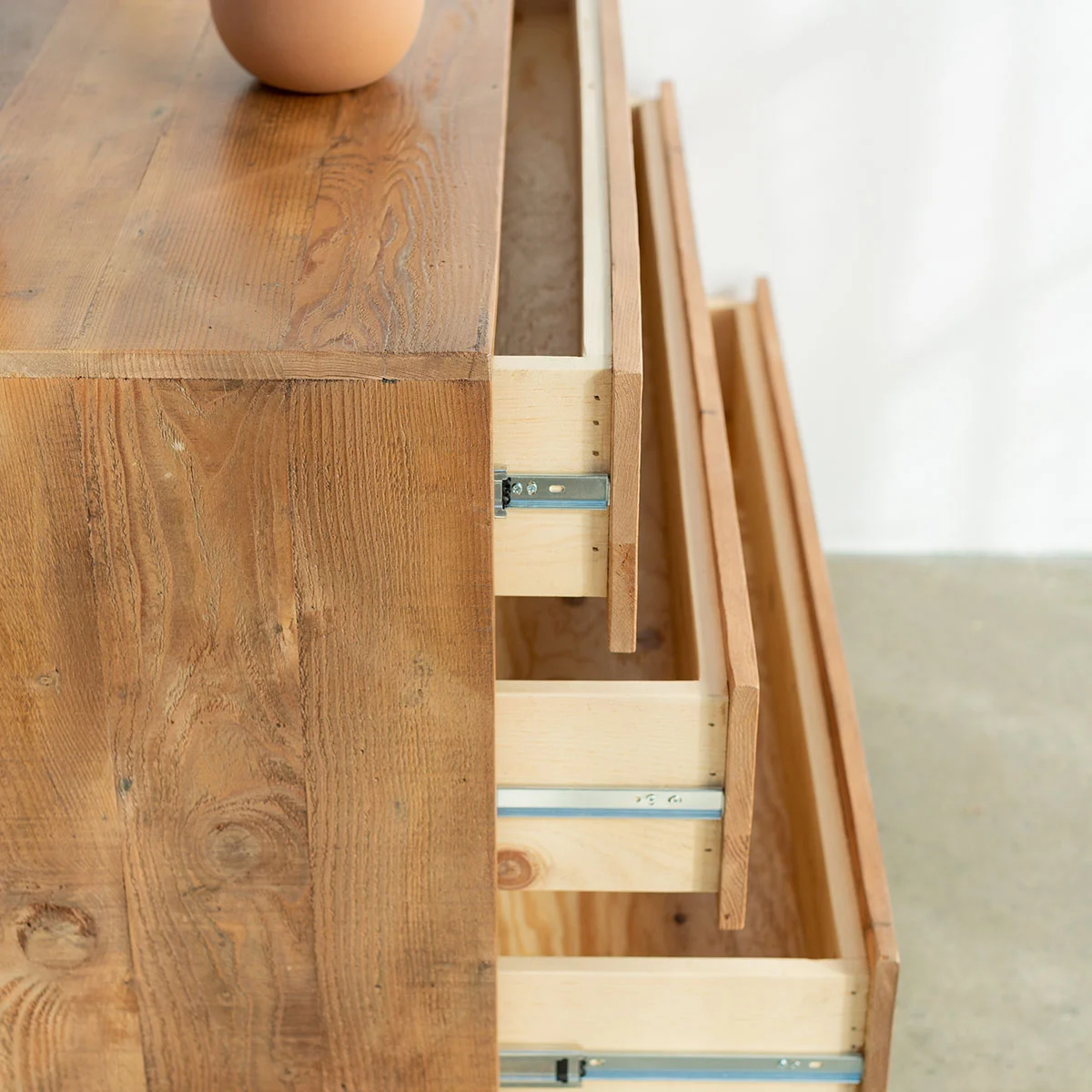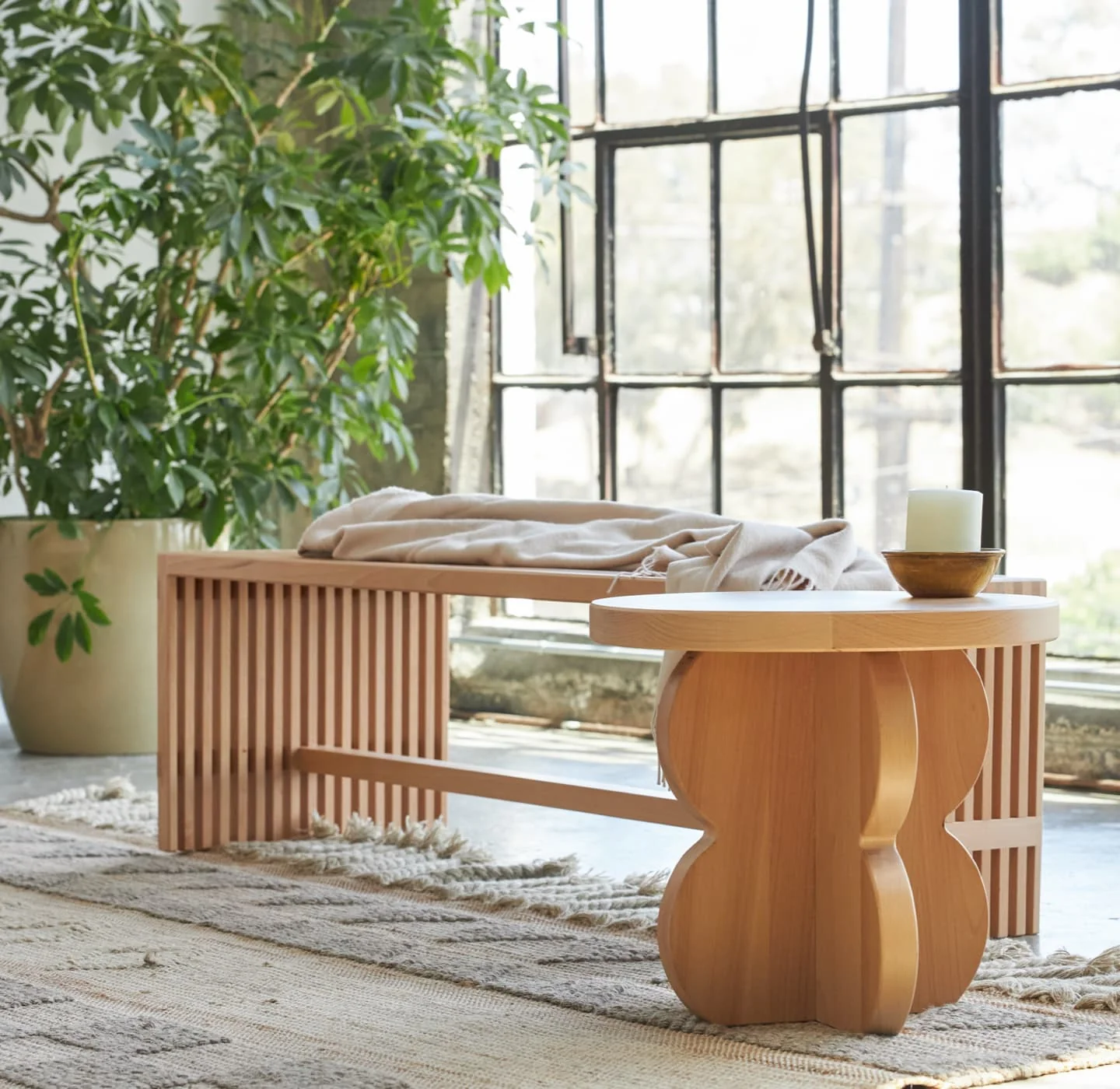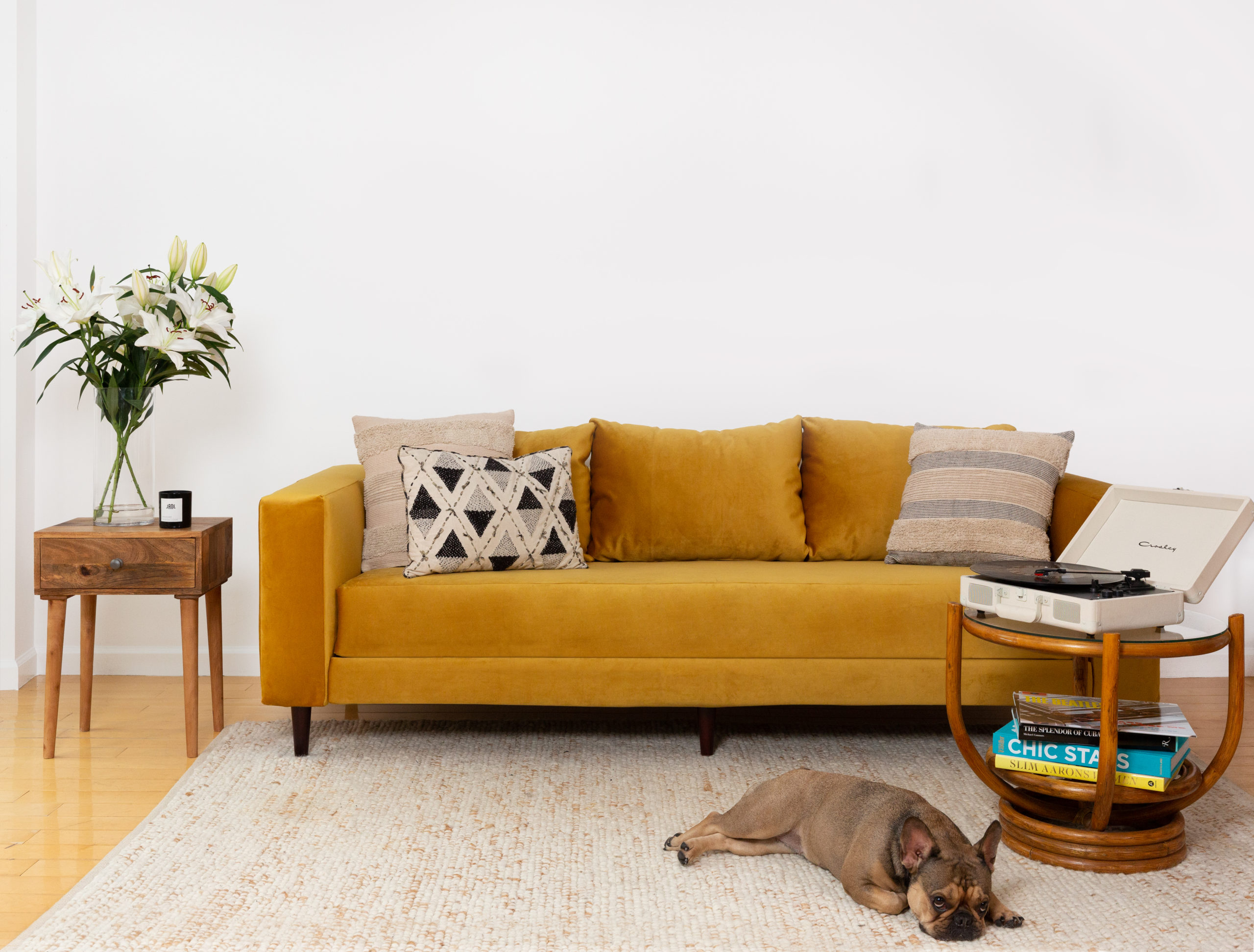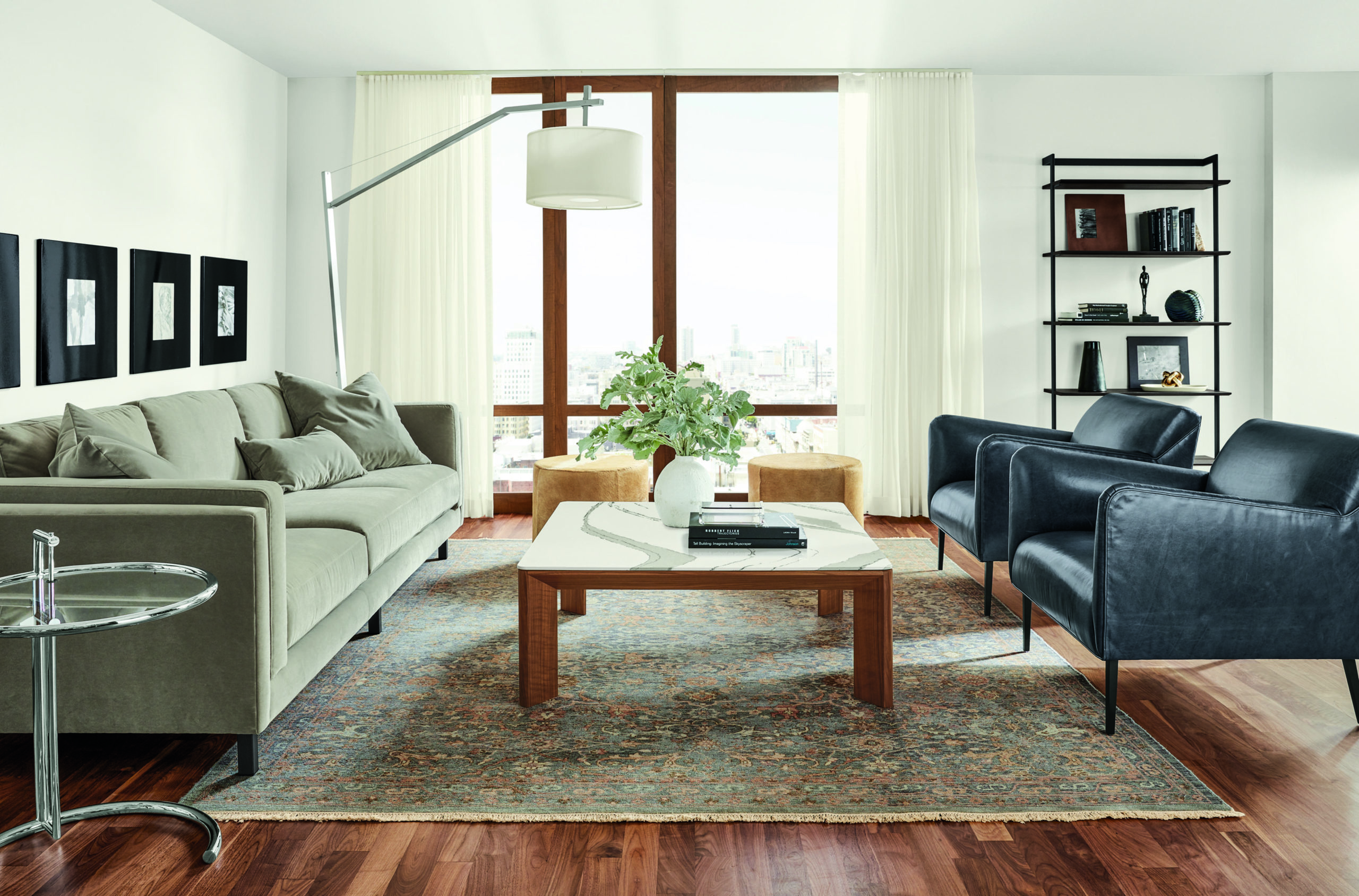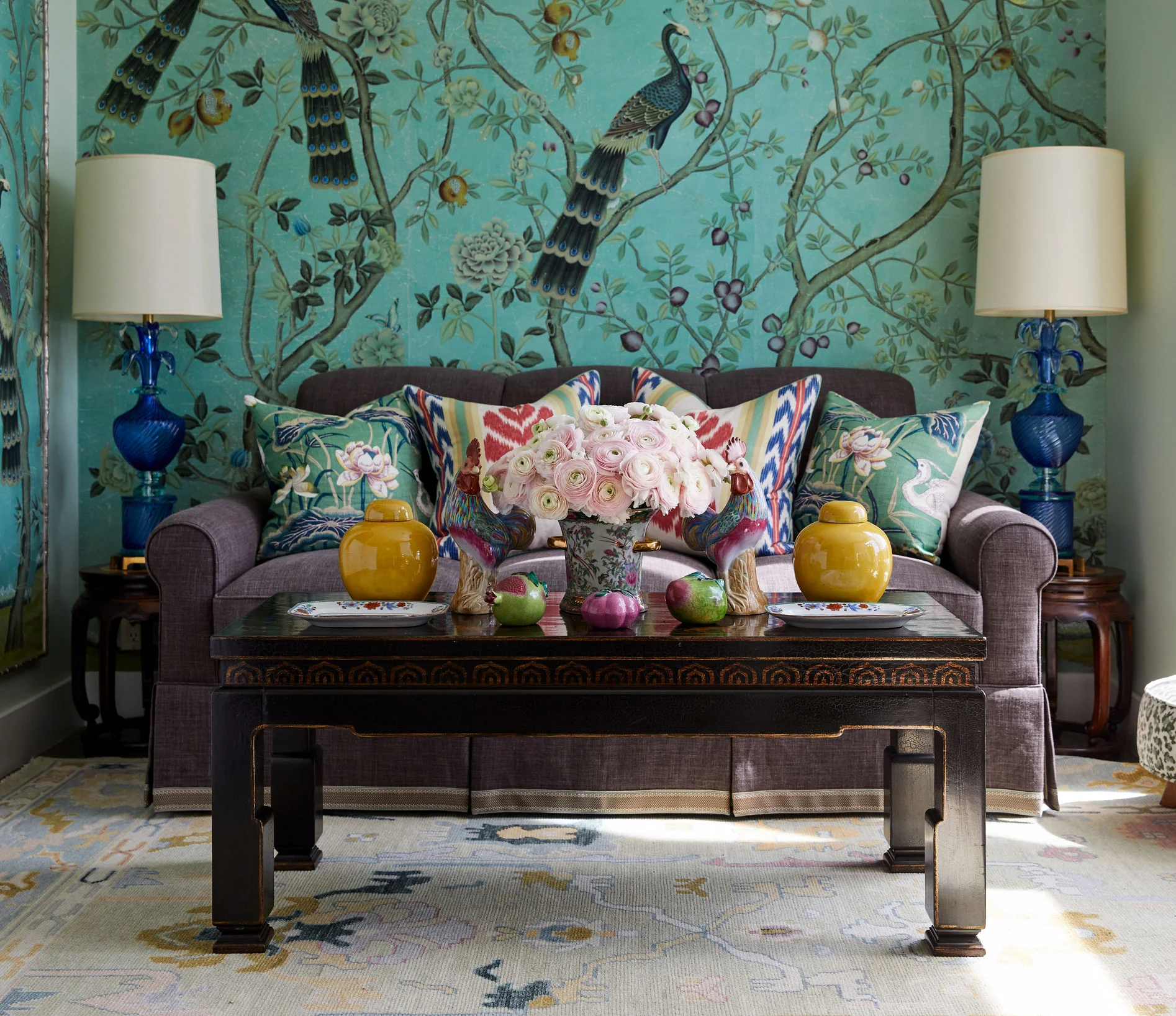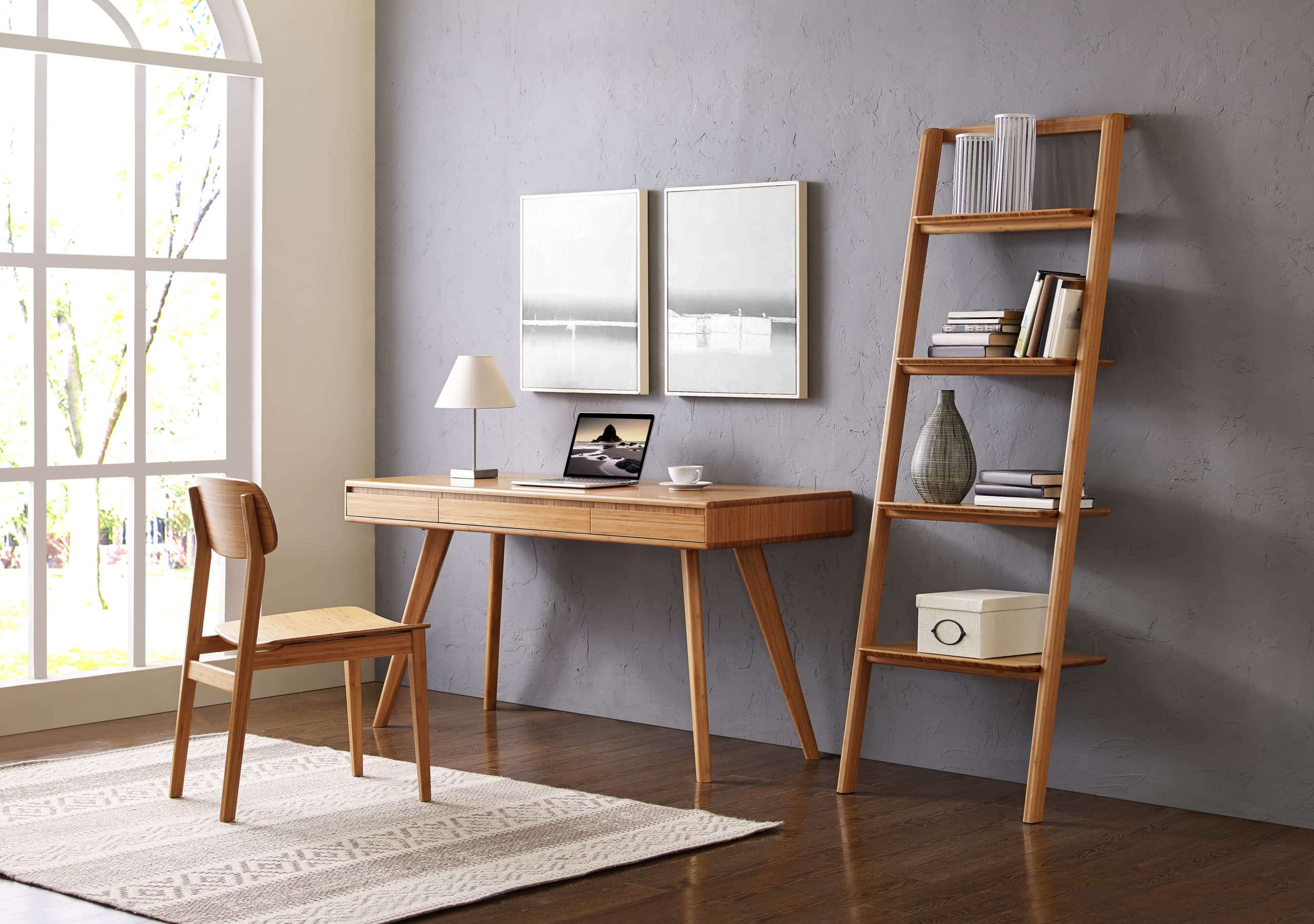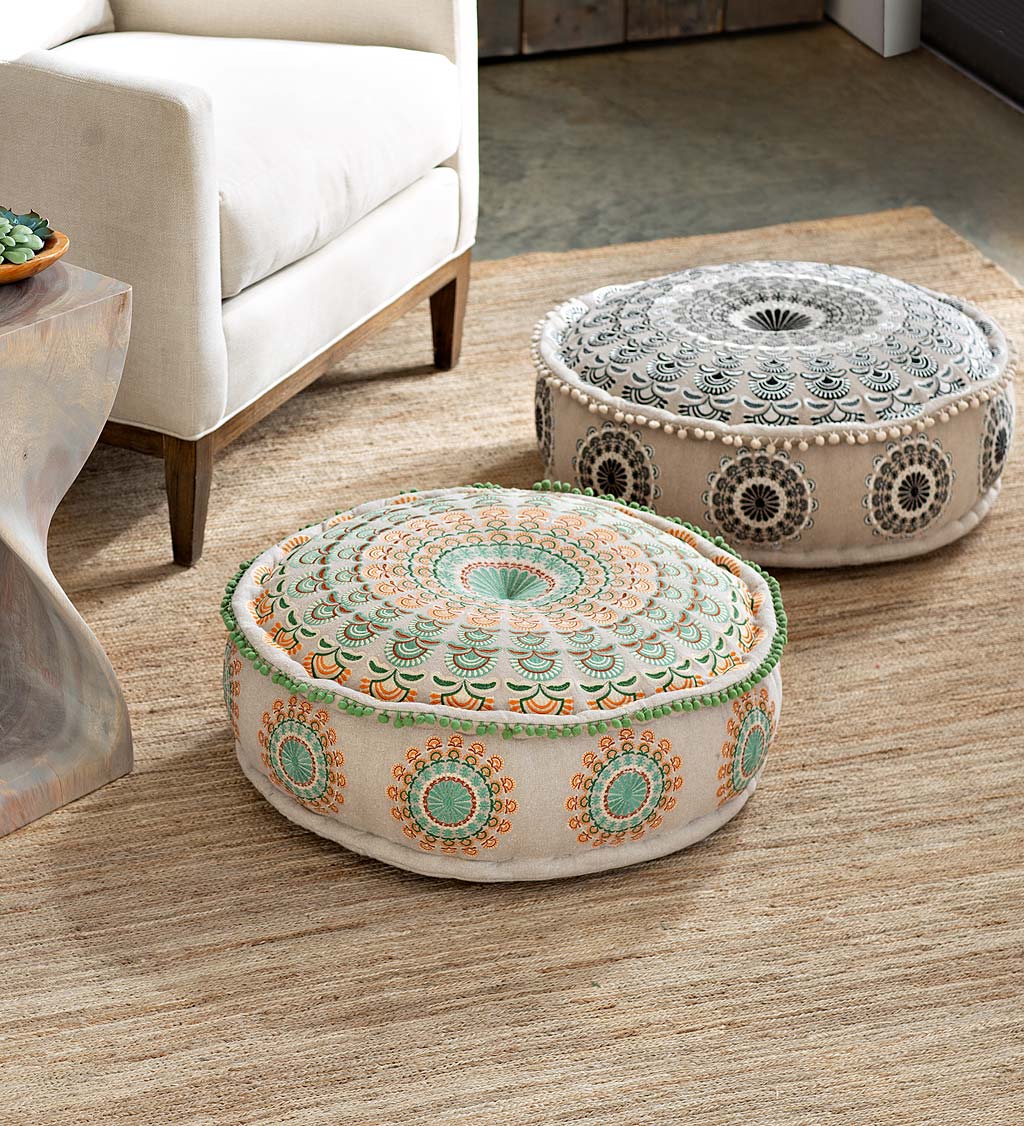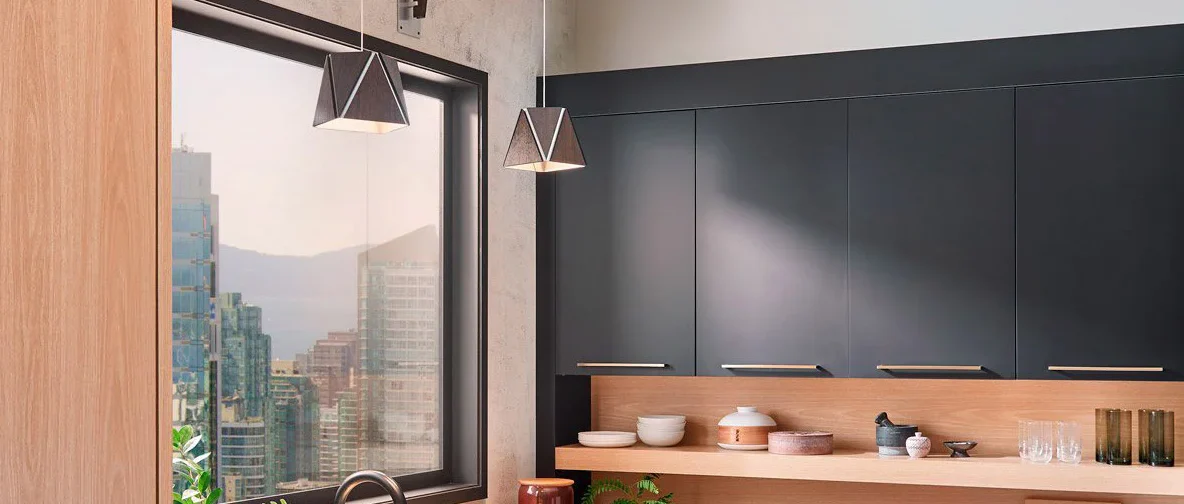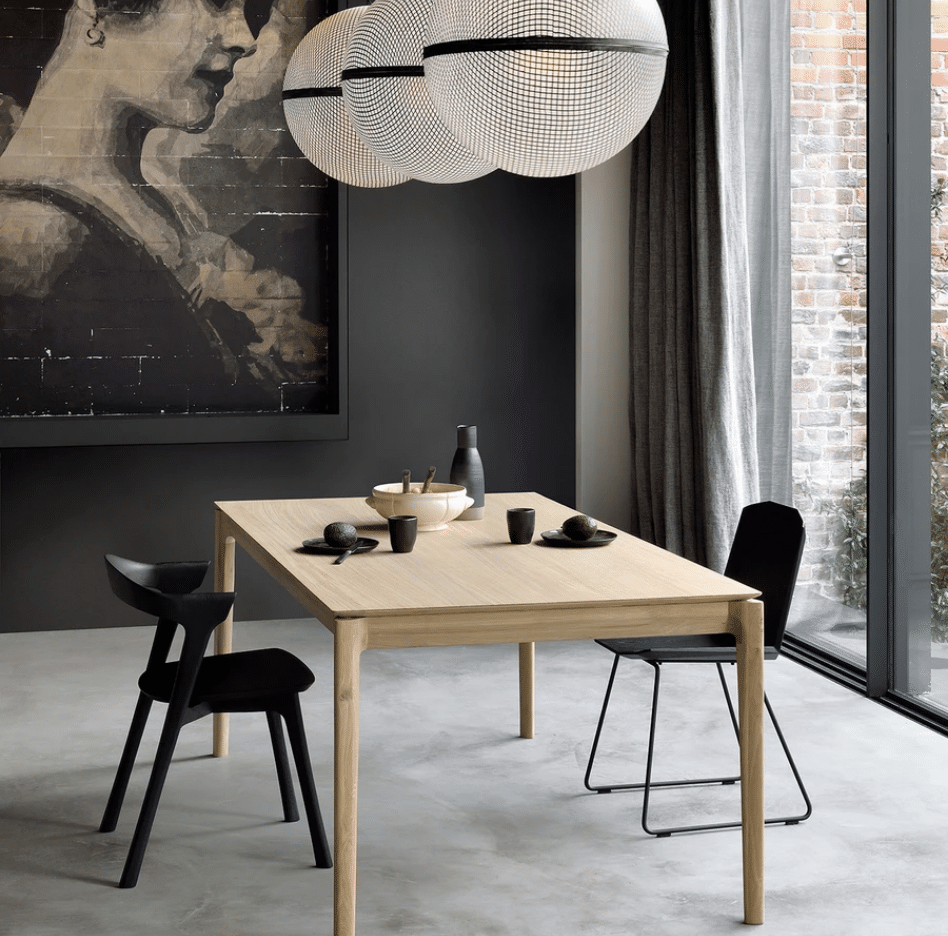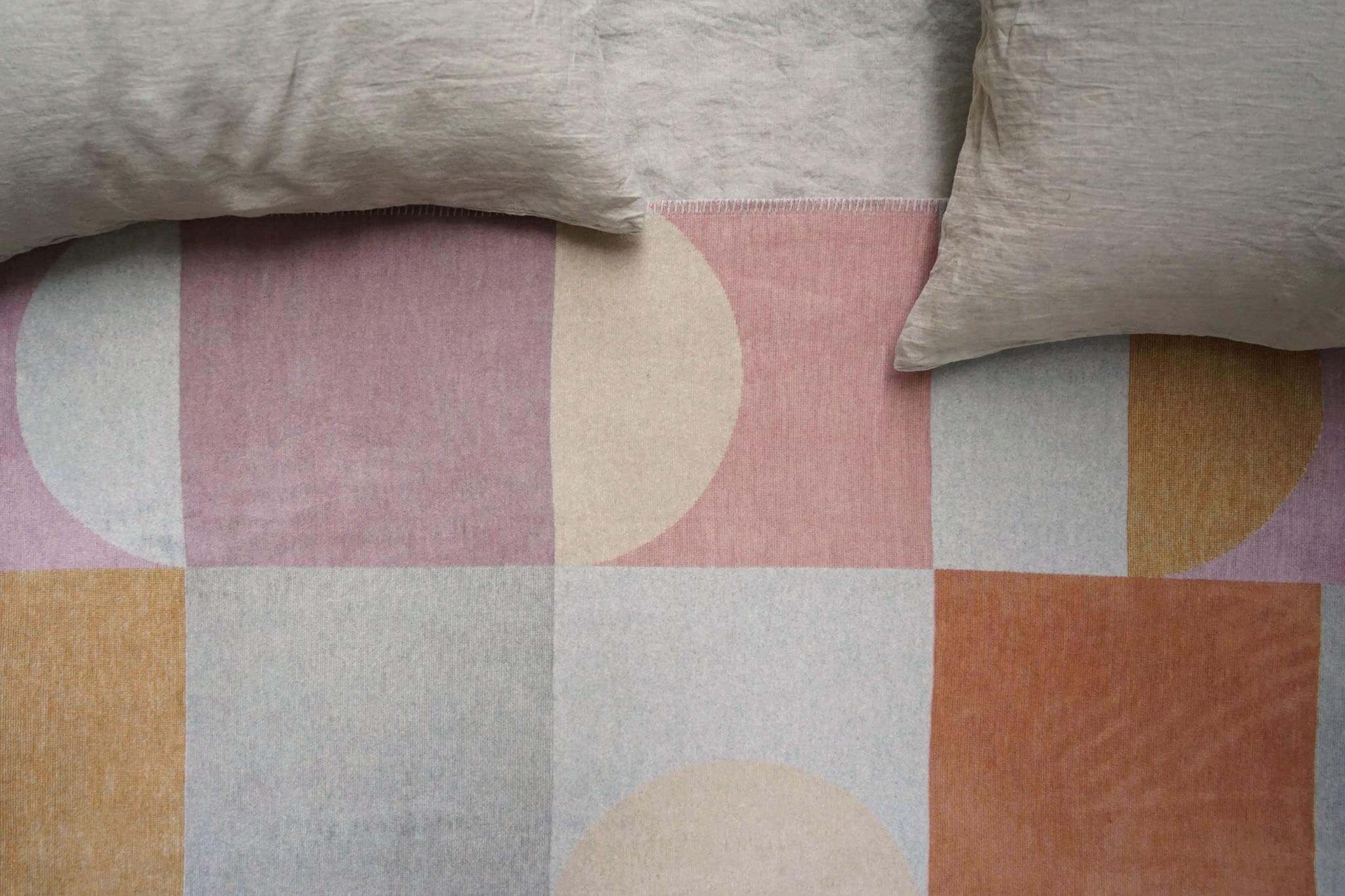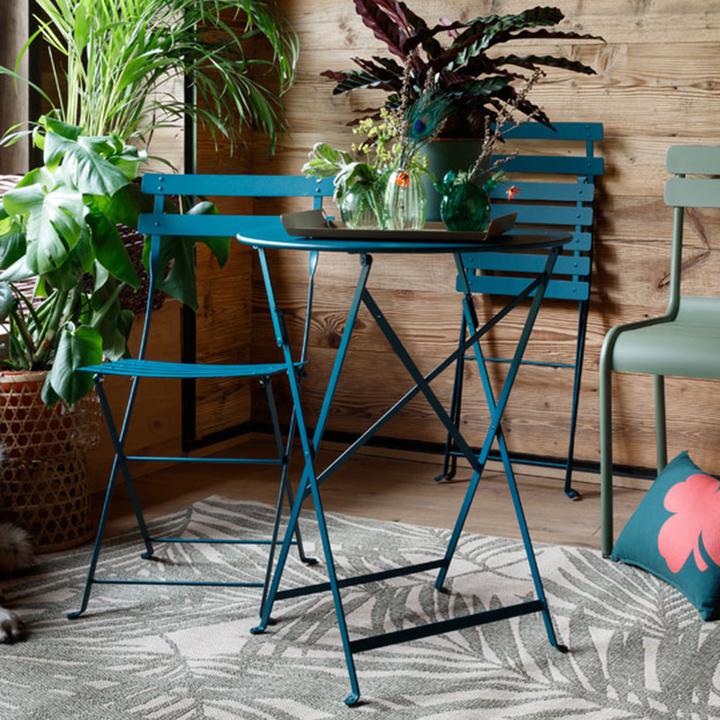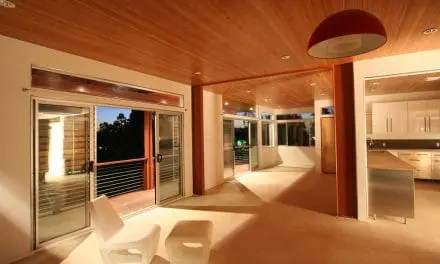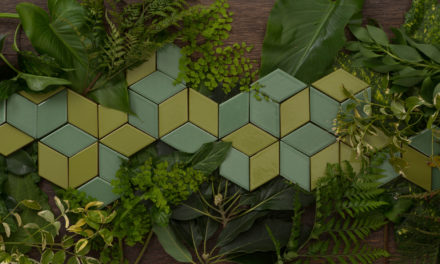Image courtesy Ethnicraft
By Legend Fears
There are so many ways to make our homes more sustainable. From energy-efficient appliances to eco-friendly materials and water-saving technology, homeowners who want to be mindful of the environment and its future have a plethora of areas they can address in order to get there. But have you ever thought about what your furniture is made of and how it’s manufactured? If you haven’t, you’re not alone. Despite furniture being one of the most common purchases for a house—the bed you sleep in, the sofa you lounge on, the table you pull up to for meals—most of us fail to understand the effects of that furniture on our environment and our overall health. The good news: We’ve done a lot of the heavy lifting for you. If you’re wondering what kind of sustainable furniture to buy, here are some factors and trustworthy sources to look for while you’re on your quest.
Image: Pren, Room & Board/Cambria, courtesy Room & Board
MATERIAL LIFE CYCLE
Sustainably sourced materials
Having furniture that is made from organic materials is one aspect, sure. But it is not itself sufficient. Any wood should be sourced from sustainably managed forests and, to ensure that, you should make sure it’s FSC-certified. Ideally it is made with natural materials that are grown (cotton, bamboo, and rattan, for example) and does not include fabrics made using petrochemicals such as nylon or polyester. Also look for pieces that use recycled or up-cycled content—reclaimed wood, plastic or glass from post-consumer recycling programs.
Manufacturing
You should think about how much energy was used to create the furniture—materials growth and/or extraction, manufacturing, and transportation. Bear in mind that water takes energy to transport, treat, and dispose as well, so water efficiency is also important. During production, as little carbon as possible should be produced to offset emissions. Use of harmful chemicals should be minimized as well. The packaging should be safe, and free of harmful products and chemicals (i.e., Styrofoam.) Does the manufacturer belong to the Sustainable Furnishings Council? That’s a great way to gauge the brand’s commitment to its impact on our health and the environment. And, if you can find manufacturers who have their factories GOTS (Global Organic Textile Standard) or GOLS (Global Organic Latex Standard) certified, then you will know that they have implemented a strict chain of control to ensure that the materials used actually live up to their certifications.
Toxins
Many of us are unaware of how toxic our household items are, including our furniture. Volatile Organic Chemicals are released from a wide range of materials such as plastics, vinyl, paints, particle board, plywood, and finishes. So, search for furniture that uses non-toxic materials. And look for certifications that support the healthy claims of the manufacturer such as Made Safe or GREENGUARD.
End of Life
What happens to the materials at the end of the product’s life? In most cases, they will end up in a landfill. Choose furniture that can be up-cycled into other products, broken down and the components recycled, composted or biodegradable to break up in landfills.
Fortunately, there are companies that are doing their part to make sure that you and your family live more sustainably. Here are some eco-options that can help beautify your home while keeping it healthier for your family and the planet.
This is a sponsored post. Some of the links in this article are affiliate links, meaning at no additional cost to you, we will earn a commission if you click through and make a purchase. Thank you for helping us continue to bring you great content.
Avocado
Avocado’s City Bed Frame, and the Malibu and Mid Century collections offer options to fit your style and your budget. And the Natural Wood collection featuring 100% reclaimed-wood dressers, bedframes, and end tables. Glorious solid Douglas fir rescued from old buildings is prized for its dense grain and hardness. The zero-VOC “rustic raw” sealant lets all the faults and nail holes of the reclaimed wood show through; minor nicks and blemishes gained over time only add to the patina. All the furniture is made in their a Climate Neutral Certified, FSC certified Los Angeles woodshop.
In 2020, Avocado became the first bedding company to have its landfill waste diversion validated by UL. Since then, they’ve developed even more products made with upcycled materials. Sustainability never looked so good as the Zero Waste Collection, made entirely with upcycled wood. No particleboard, no fiberboard… this collection of creative sidetables and decorative items is crafted of 100% upcycled beechwood. Stained to match the City Bed Frames, the collection creates a cohesive, contemporary look.
Sabai
Sabai thinks beyond eco-friendly manufacturing, offering customers confidence that your home reflects your values. This woman-owned organization manufactures luxury furniture in North Carolina using materials like fabric from upcycled water bottles, 100% recycled fiber fill, and only FSC-certified wood. Materials are chosen to minimize toxic VOCs with no flame retardants or glues. Fabrics are inherently stain-proof but cushions and pillowcovers are removable… just in case. And when you’re in need of a change, slipcovers are available.
Sabai sells direct to customers using flat-packed, plastic-free shipping, and their unique closed-loop system prevents waste. All elements are replaceable, and mechanical fasteners enable repairable furniture of lasting value. The Sabai Revive program lets customers trade-in their furniture, which are become available for purchase as pre-owned – keeping Sabai furniture out of the landfill. Image courtesy Sabai.
ROOM & BOARD
Finding furniture that is made from quality, well-sourced materials is hard to come by. Furniture made from a diverse set of materials is that much harder. This is where Room & Board comes in. A majority of their materials used comes from recycled components. For example, they use 99% recycled natural steel for their tables. They use recycled plastic milk jugs for their low-maintenance outdoor furniture and reclaimed or sustainably sourced wood to design their indoor collections. Another neat way they use their materials is they work with ECONYL, a form of regenerated nylon made from leading manufacturer Aquafil, to turn discarded fishing nets and other nylon waste into yarns used for their rugs. In addition to their diverse blend of material use, they draw from different styles to develop their furniture. Referencing multiple design movements, they lend a more international feel with their creations, often nodding to Scandinavian and Japanese aesthetics.
In one noteworthy collaboration, they partnered with eco-minded stone company Cambria to craft Pren, a collection of solid Appalachian white oak or solid Midwestern walnut tables featuring Cambria’s natural quartz surfaces. Room & Board is among the High Scorers in the 2022 Wood Furniture Scorecard, an initiative developed by the National Wildlife Foundation and the Sustainable Furnishings Council to build awareness of best practices, support progress and recognize leadership in responsible wood sourcing.
Most importantly, they are actively working toward change, doing their part to create a more sustainable world. Annually, Room & Board donates 2% of of profits to nonprofit organizations helping build better communities, protect the environment, and advance the arts. Even its central office has received LEED Gold certification from the U.S. Green Building Council. They are also a founding member of the Sustainable Furnishings Council, showing their commitment to advocating for sustainable furniture and bringing enduring quality to their customers. Image: Pren Table, Room & Board/Cambria Collaboration, courtesy Room & Board
CHAIRISH
The circular economy is undergirded by environmentalism’s four Rs—the reusing, refurbishing, repairing, and reselling of products—which keep items out of landfills. The resale model also reduces the need to create new products, with all their negative environmental impacts, from raw materials extraction to production waste to transportation. As Chairish co-founder and president Anna Brockway says, “Vintage is an essential part of the circular economy and we’re proud to be leading the way. It’s the most stylish way to be kinder to our planet.” When you use what already exists, you save materials from the waste stream, and you gain a unique piece that you know can stand the test of time. Image courtesy Chairish
THUMA
“Thoughtful beds for modern living” is their mantra, and they definitely put much thought into how they craft their furniture. Based out of San Francisco, Thuma draws from modern design and Japanese influences to develop their handcrafted, small-batch beds. To combat the harmful effects of furniture disposal, the company has made sure to stay present through the production process to ensure quality products for their customers. For example, during the production phase, Thuma uses upcycled and repurposed rubberwood from nearby areas, minimizing carbon footprint and waste by reducing transportation. Even down to the packaging, Thuma makes sure the materials are as harmless as possible. Styrofoam is a common synthetic packaging material, but also one of the worst materials on the planet for the environment. By fitting products together in recycled cardboard instead, Thuma removes the need for Styrofoam, giving you a smooth delivery of the product. The bed comes complete with an upholstered headboard whose linen cover can be removed and washed, and a non-toxic CertiPUR-US foam fill. And, they make minimalist bedside tables using the same upcycled wood and clean-lined Japanese joinery (read: there’s no unnecessary metal hardware) for a holistic bedtime experience. The beds are GREENGUARD certified, and, for every bed sold, a tree is planted through the nonprofit One Tree Planted, which focuses on reforestation. Image courtesy Thuma
GREENINGTON
With a company of this name, how can you not expect an eco-friendly product? Greenington uses bamboo that is sustainably-sourced from forests in China. Some highlights of bamboo are that it’s fast-growing, good at taking carbon out of the atmosphere, and produces 35% more oxygen than regular trees. Also, Greenington uses 100% of the bamboo that it harvests during manufacturing, so there’s no wasted material. Regarding manufacturing, Greenington believes in choices. So you can choose from several low-toxin finishes including Caramelized Honey hues, reddish-brown Sable tones, contemporary Mocha and Black Walnut, or more exotic finishes such as their Tiger option, which blends ebonized and blonde materials. Both the classic and exotic collections use 100% Moso bamboo during the manufacturing process, which emphasizes strength and long-lasting durability, as Greenington’s exotic bamboo is 100% harder compared to commonly used red oak. Image courtesy Greenington Fine Bamboo Furniture
VIVATERRA
Translating to “living earth,” VivaTerra was founded in California in 2004 with an objective to provide top-notch, eco-friendly options to those who want to elevate their living environments. In that time, their collections have expanded to include furniture, planters, lighting, rugs and more, with natural materials varying from recycled glass to vintage fabrics and reclaimed wood. This effort couldn’t be done without the relationships they have with artisans and fair-trade organizations worldwide.
Sourcing from over 20 countries, VivaTerra makes sure to maintain sustainable production throughout. They support their artisans through ethical work conditions, fair wages, and sustainable development, as well as giving them an opportunity for their products to be presented to VivaTerra’s customers. VivaTerra also has domestically made products, giving their U.S. customers an option to buy products that were made locally. This not only adds a diverse element to the company, but it also reduces waste from transportation, as the distance to deliver materials reduces drastically. Images courtesy VivaTerra
VIESSO
Viesso collaborates with artisan brands that align with their goal of providing eco-friendly furnishings that protect both customers and the environment. By curating unique designs and mindful furniture while keeping apprised of modern trends, Viesso offers thoughtful options to make sure that you live a sustainably chic life. Some of these brands include Ethnicraft, Area, Mamagreen (which uses salvaged teak from Java), and Cerno (which draws its ethical and aesthetic ideals from the creative culture of Laguna Beach, CA, and its natural surrounds). Here, we explore a couple of them.
Image courtesy Cerno
Fermob
The great outdoors is a part of Fermob’s DNA. From their bistro chairs (shown right) to their LED lamps and everything in-between, they make sure that their garden furniture respects nature and remains timeless. For production, they use recycled aluminum and steel (which can then be recycled again), so not only are you buying sustainable furniture, but also furniture that can live many lives and truly stand the test of time. Image courtesy Fermob / Stéphane Rambaud
Ethnicraft
Conscious of their impact on the environment, Ethnicraft makes sure to deliver wood pieces that are respectful to the planet. From the origin of the wood to zero waste production, Ethnicraft’s solid wood pieces are long-lasting, making them quite the sustainable option. Image left, courtesy Ethnicraft
Area
Founded in 1990 by Swedish designer Anki Spets, Area is known for its environmentally responsible bedding, accessories and furniture lines, which place an emphasis on using organic materials, seen in the India Mix Blanket (shown left). Employing only natural fibers, Area uses pure-linen and linen-cotton blends for its bedding with fewer chemicals in their production process, giving you quality and durability, as linen fibers are 2-3 times stronger than cotton alone. The fabrics used in Area’s bed linens meet rigorous safety and social-impact standards like OEKO-TEX and Sedex Members Ethical Trade Audit. Image courtesy Area
The options for responsible, healthy furnishings have grown exponentially in recent decades, making an eco-friendly and sustainable lifestyle more possible than ever before.


